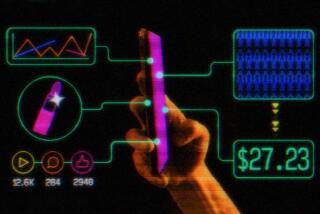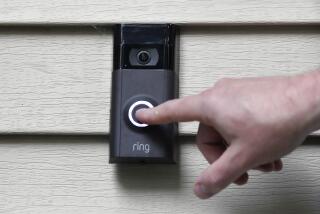Amazon unveils Kindle Fire tablet computer for $200
Amazon.com Inc. unveiled its first tablet computer with a host of functions and features that allow it to do nearly everything the iPad can do — but at less than half the cost.
Called the Kindle Fire, the device may quickly become the strongest competitor yet to the iPad, analysts said. Barely 18 months after Apple Inc. released the first iPad, tablet computers are a nearly $30-billion industry, with the iPad accounting for almost 80% of the market.
The Fire, introduced Wednesday by Amazon Chief Executive Jeff Bezos, is aimed at attracting consumers who want a tablet but can’t afford the iPad and its other pricier competitors. Amazon set the price at $200 — well below Apple’s $500 iPad.
“The price is really what’s going to drive a lot of success for Amazon,” said Alex Spektor, an analyst with Strategy Analytics in Boston. “Its features are competitive with other tablets, but the low price doesn’t make it seem like a cheapo device.”
Spektor said the sleek look and snappy performance set the device apart from other low-cost tablets that have failed to catch on with consumers.
In addition, the world’s largest online retailer brings to its Fire a huge library of movies, music and books — content that no other iPad rival can match.
“Home run,” analyst Ben Schachter of Macquarie Securities wrote in a note to investors. The new Kindle “will almost certainly be successful with consumers.”
The tablet’s low price reflects Amazon’s effort to remain a discount leader, a key strategy in its early success selling books, electronics and appliances.
“We’re building premium products at non-premium prices,” Bezos said about the Fire.
Wall Street’s reaction indicated that the Kindle Fire may turn out to be a worthy competitor: Shares of Amazon rose 2.5% on Wednesday as major stock market indexes fell as much as 2.2%.
Apple bloggers objected to the notion voiced by some that the Fire would be an “iPad killer,” saying the best it was likely to do was end up in second place.
“It’s not going to touch the high-end of the market where the iPad lives,” wrote Jim Dalrymple, a blogger on the Loop. Instead it might appeal to “kids or spouse[s].”
Amazon started taking orders Wednesday for the Fire, and will start shipping it Nov. 15.
Although the Kindle Fire will let users browse the Web, watch movies and read books, it is missing several of the bells and whistles of earlier tablets: There is no camera or cellular capability, and its screen, at 7 inches, is substantially smaller than the iPad’s.
Still, Amazon hopes its tablet will have a unique advantage: The Fire will be connected to the company’s massive cloud computing network, a worldwide system of high-speed servers that can quickly send video, music and Web pages to the device.
“No one can really touch Amazon in terms of their cloud services,” said Sarah Rotman-Epps, an analyst at Forrester Research in Cambridge, Mass. “Amazon is leading with content and services, and that’s what consumers care about more than the hardware.”
The company built a new kind of Web browser for the Fire. It is designed so that much of the heavy lifting associated with loading Web pages is done on Amazon’s servers, allowing the device to display the sites more quickly.
Rotman-Epps said the Fire posed a special problem to tablet makers already trailing the iPad.
The faster browser, lower price and broad access to digital entertainment made it better “in every obvious way” than more expensive tablets from Samsung Electronics, Motorola Mobility Holdings Inc. and HTC Corp., she said.
Like the Fire, tablet devices from those rivals use a version of Google Inc.’s Android mobile operating system. But Amazon went a step further, creating a custom version of the operating system to focus largely on Amazon products and entertainment.
The Fire also appeared to spell trouble for Amazon’s competitors in the electronic book market, chiefly Barnes & Noble Inc., which makes the Nook e-reader. Shares of Barnes & Noble dropped 91 cents, or 6.9%, to $12.30 on Wednesday because of investor fears that the already underperforming Nook would fall further behind.
“It hurts them a lot more than it does Apple because they’re so reliant on the Nook,” analyst Michael Souers at S&P Equity Research told Reuters.
Last month Barnes & Noble forecast that sales of its Nook devices and e-books would double this year and reach $1.8 billion, or nearly a quarter of its revenue, even as its same-store sales stagnate amid an industrywide decline in print book sales.
Souers predicted that the company would have to lower the price on the Nook, which was launched in 2009, about two years after the first Kindle hit the market.
Also Wednesday, Amazon introduced improved versions of its original Kindle e-readers, which use electronic-ink technology instead of digital displays.
Among those was Amazon’s $79 Kindle, its lowest priced e-reader yet and 30% lighter than previous models.
The company also will offer a $99 Kindle Touch, on which users can turn pages by touching the screen rather than by pressing plastic buttons. Another version of the Kindle Touch will feature a cellular connection and will sell for $149.






